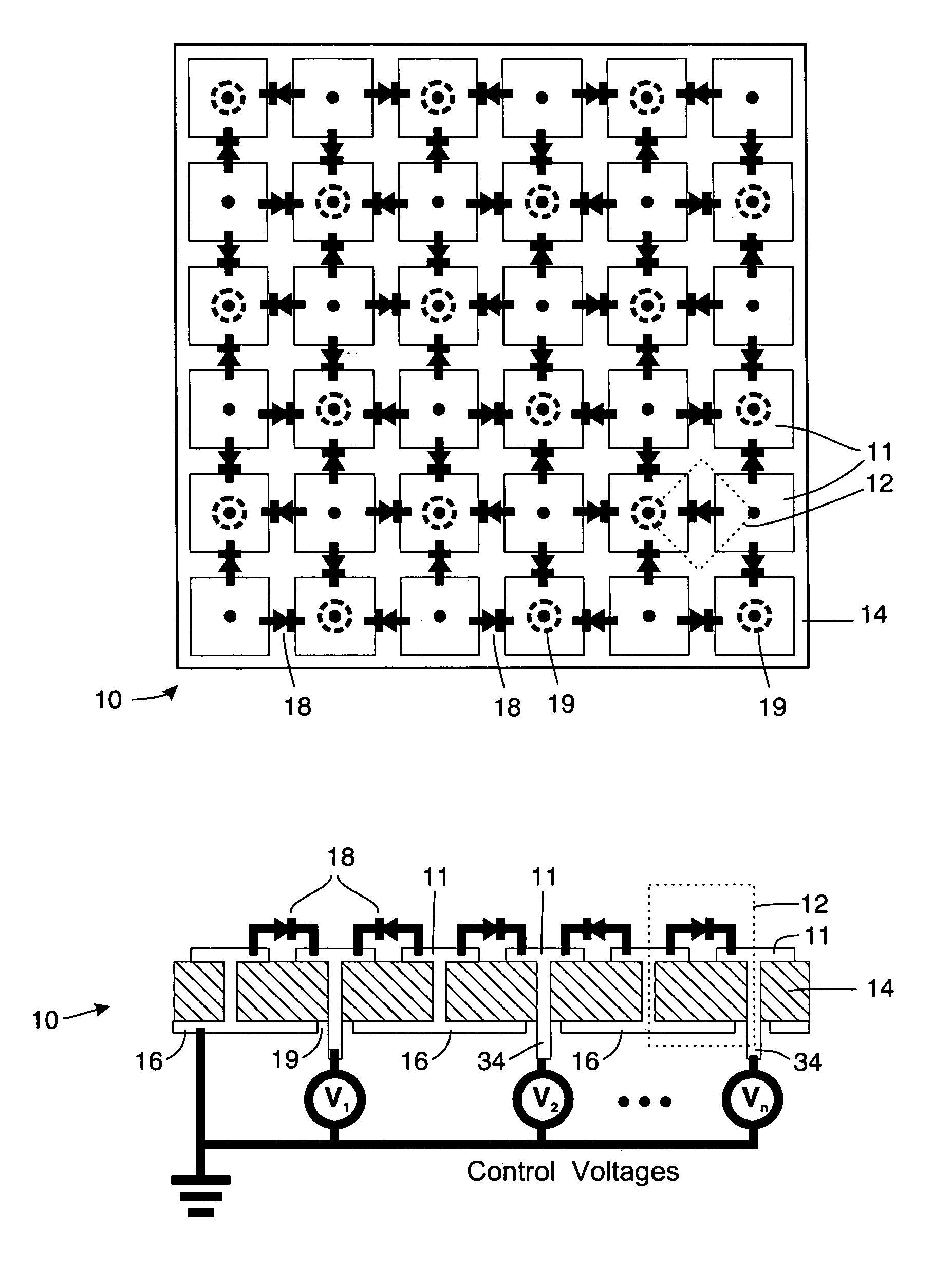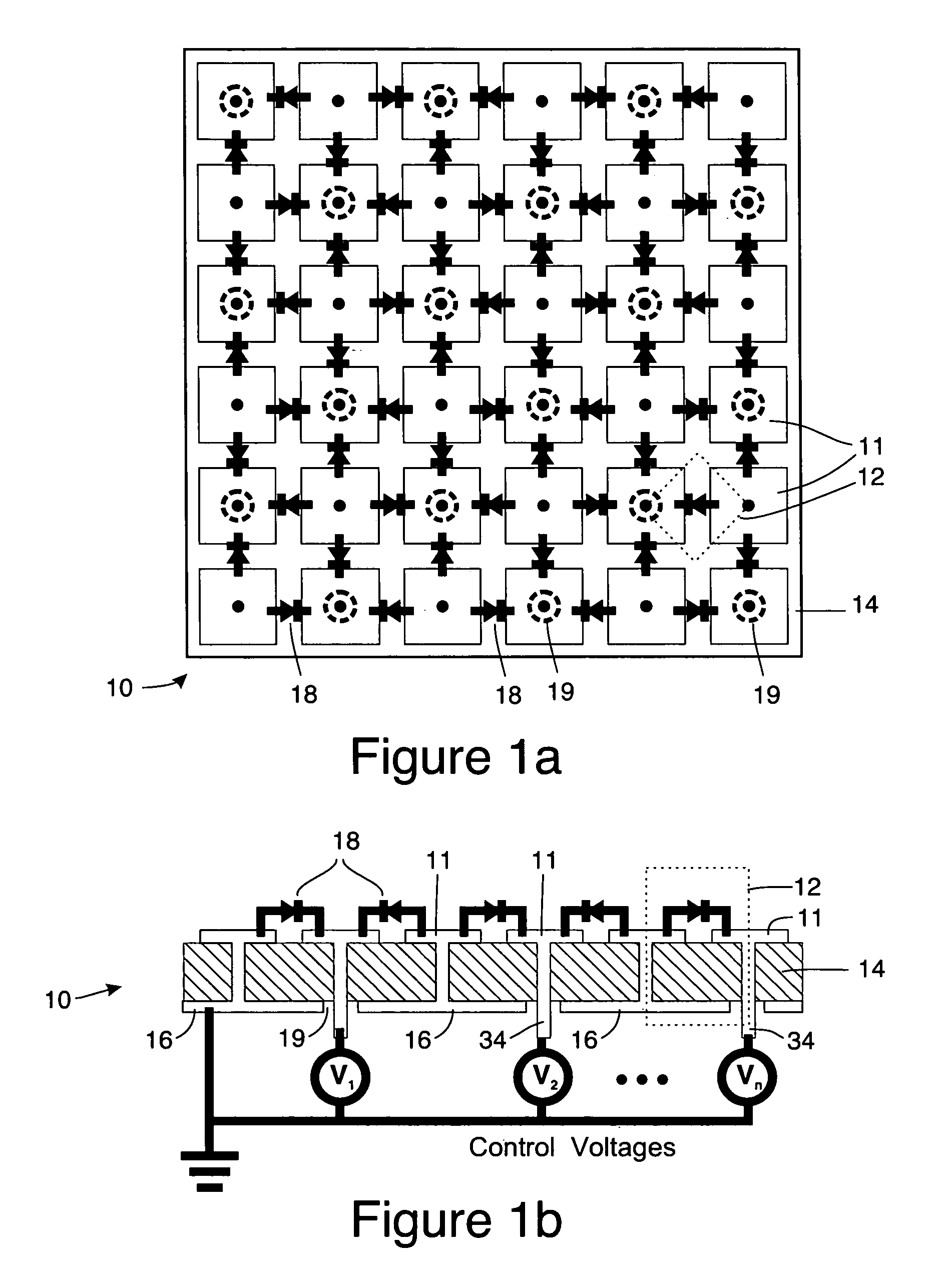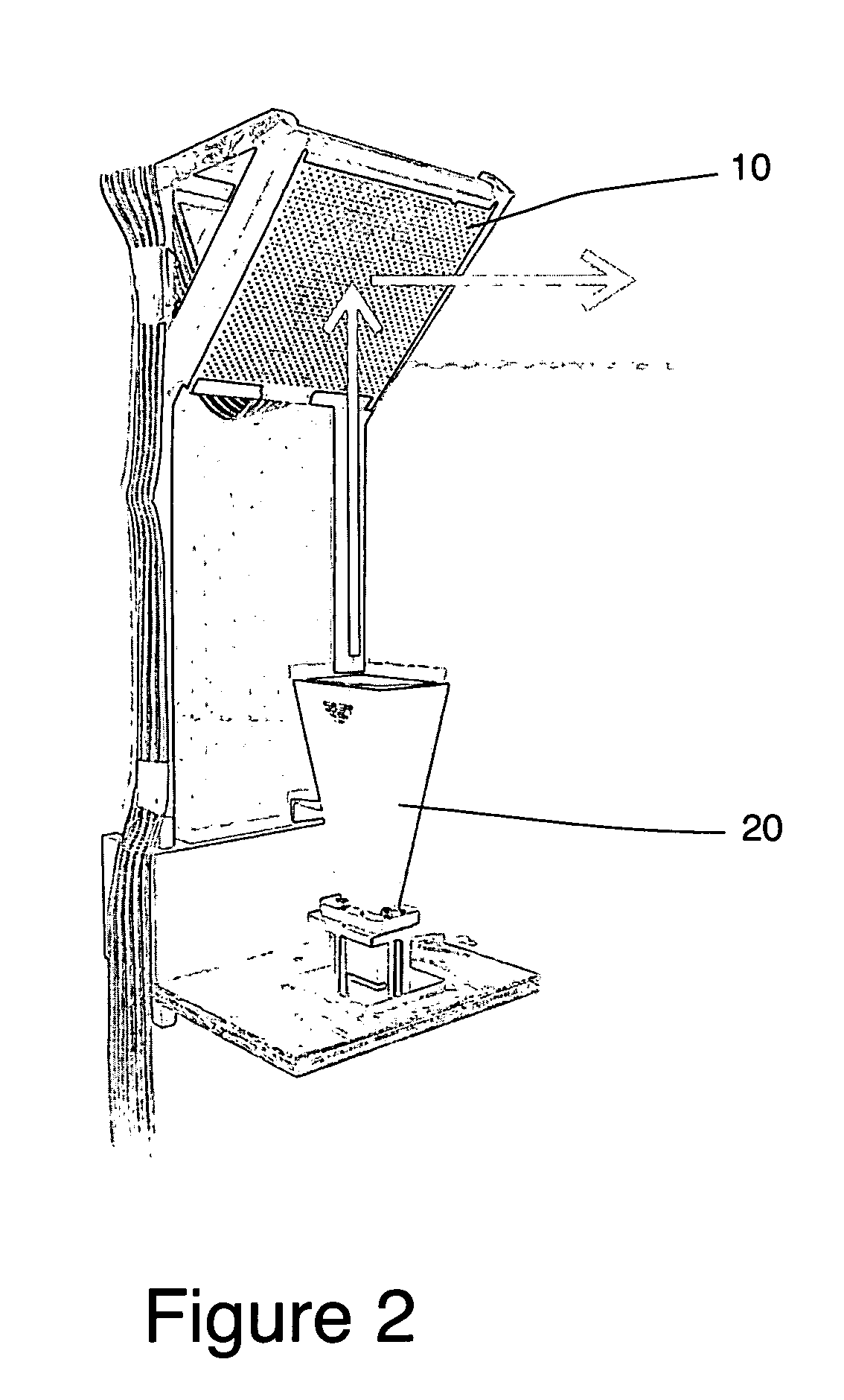Adaptive beam forming antenna system using a tunable impedance surface
a beam-forming antenna and beam-forming technology, applied in the direction of antennas, antenna details, basic electric elements, etc., can solve the problems of high cost of many applications, prohibitively expensive for many applications, and the complexity of phased arrays, which is the disadvantage of traditional adaptive antenna methods compared to the present disclosure,
- Summary
- Abstract
- Description
- Claims
- Application Information
AI Technical Summary
Benefits of technology
Problems solved by technology
Method used
Image
Examples
Embodiment Construction
[0037]The technology disclosed herein preferably utilizes a tunable impedance surface, which surface has been disclosed in previous patents and patent applications noted above. An embodiment of an electrically tunable version of such a surface 10 is shown in FIGS. 1a and 1b. The tunable impedance surface 10 is preferably constructed as an array of small (much less than one wavelength in size on a side thereof) resonators cells 12 each of which can be considered as a LC circuit with an inductance L and a capacitance C. The array of resonator cells 12 are preferably defined by an array of plates 11 disposed on a dielectric surface 14 and in close proximity to a ground plane 16 (typically the dielectric surface has a thickness less than one tenth of a wavelength as the frequency of interest). This surface 10 is tuned using resonator tuning elements or means such as varactor diodes 18 that provide a variable capacitance that depends on a control voltage V1, V2 . . . Vn. The applied volt...
PUM
 Login to View More
Login to View More Abstract
Description
Claims
Application Information
 Login to View More
Login to View More - R&D
- Intellectual Property
- Life Sciences
- Materials
- Tech Scout
- Unparalleled Data Quality
- Higher Quality Content
- 60% Fewer Hallucinations
Browse by: Latest US Patents, China's latest patents, Technical Efficacy Thesaurus, Application Domain, Technology Topic, Popular Technical Reports.
© 2025 PatSnap. All rights reserved.Legal|Privacy policy|Modern Slavery Act Transparency Statement|Sitemap|About US| Contact US: help@patsnap.com



